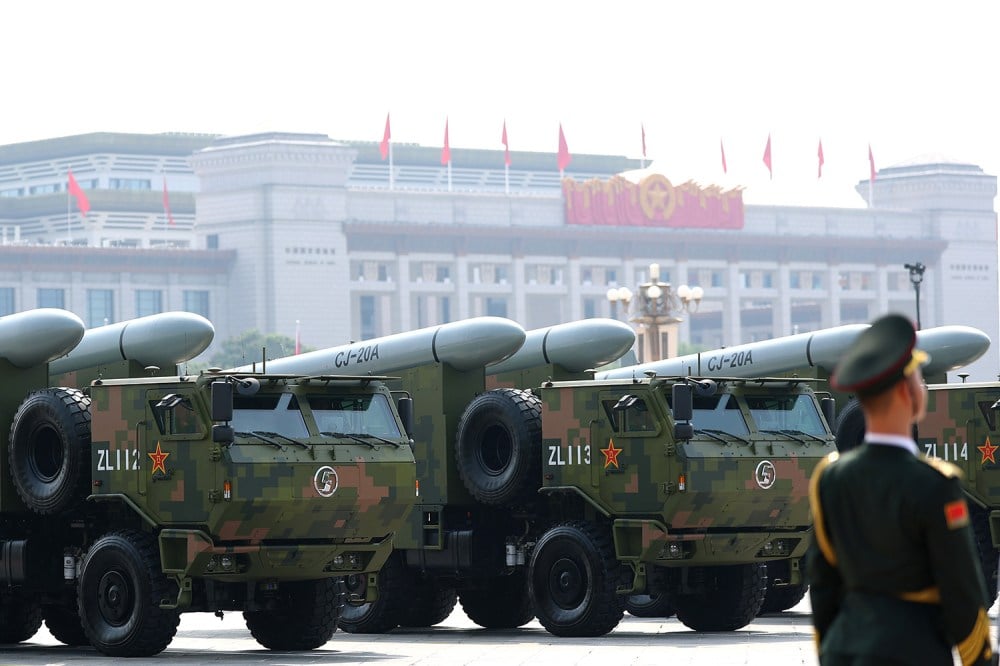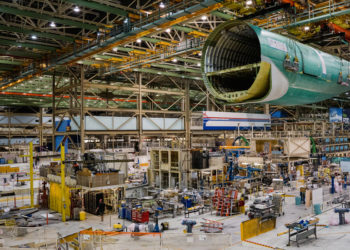China is a dominant player in emerging technologies. It is a renewable energy superpower, controls the global commercial drone market, and has installed more industrial robots than the rest of the world combined. At the same time, it is pouring resources into outcompeting the United States in artificial intelligence.
But Beijing is not only interested in mastering civilian technologies. It also seeks to develop the world’s premier military capabilities by integrating its civilian commercial ecosystem and defense industrial base. This strategy, known as military-civil fusion, draws inspiration from Washington’s ability to leverage commercial innovation for battlefield advantage, in areas such as satellite imagery, microelectronics, and, more recently, AI-enabled decision support systems.
For years, China’s defense sector has been plagued by inefficiency and corruption, leading to questions about whether Beijing could reform its defense industrial base to successfully adopt dual-use emerging technologies critical to fighting future wars. New data, however, reveals that the People’s Liberation Army (PLA) is reaching beyond this historical base to tap into an emerging class of commercial suppliers to develop advanced capabilities.
We recently conducted a study on China’s military-civil fusion at Georgetown University’s Center for Security and Emerging Technology, where we both work. Our analysis of thousands of publicly available AI-related contract awards published by the PLA in 2023 and 2024 offers a unique view of the organizations supplying the Chinese military with AI-related capabilities. While some of the top suppliers are state-owned defense conglomerates, the majority are civilian companies and universities developing dual-use technologies.
These findings are a wake-up call. They suggest that China is successfully broadening its defense ecosystem and drawing on a wider network of companies and research institutions to enhance its AI capabilities. Over time, such gains could eventually erode the U.S. military’s technological advantage over the PLA.
For decades, China’s defense sector was the near-exclusive preserve of hulking state-owned enterprises. These organizations remain among the top awarded organizations in our dataset. But over the past decade, Chinese President Xi Jinping, concerned about the PLA’s reliance on a small group of state-owned enterprises, has tried to reduce the military’s dependence on them by lowering the barriers for civilian firms to supply the PLA with dual-use technologies.
Our findings suggest that Beijing’s investments in military-civil fusion may be paying dividends. Of the nearly 350 entities that we reviewed, nearly three-quarters were firms with no self-reported state ownership ties. As a group, these companies won more contracts than state-owned enterprises. Most strikingly, they are relatively young: Two-thirds were founded after 2010.
Greater competition within China’s defense sector could help the PLA adopt cutting-edge technologies. For example, iFlytek Digital, which has close ties to iFlytek, a leader in speech recognition and natural language processing, won 20 contracts in two years, including for translation software and AI-enabled decision support systems. PIESAT, a satellite and geospatial analytics company, is delivering combat simulation platforms and automatic target recognition capabilities. And Sichuan Tengden has produced drones that the PLA has deployed on missions near Japan and Taiwan.
Some of these entities are tightly integrated into global value chains, and others have operations in countries allied with the United States. In March, for example, iFlytek announced plans to expand its European business operations and open a new office in Paris. As of 2023, PIESAT claimed subsidiaries in Australia, Denmark, Singapore, and Malaysia, among other countries.
These and other nontraditional vendors are developing technologies that could boost the PLA’s capabilities in intelligence, surveillance, and reconnaissance; data fusion and analysis; targeting; and autonomous systems. And they are doing so while also selling goods and services to customers beyond the Chinese military.
The eroding divisions between civilian and military technology also extend to academia. While top PLA-linked research institutions, such as the Seven Sons of National Defense, received a substantial number of contracts in our dataset, so too did some civilian universities. These organizations, many of which have not been traditionally associated with the defense sector, won bids for projects with clear military applications, such as algorithms to control drone swarms.
This blurring poses challenges for U.S. policymakers and universities. Without proactive measures in place, academic collaborations between U.S. and Chinese institutions could inadvertently contribute to China’s military modernization. At the same time, sweeping U.S. restrictions on research partnerships with China, which have already featured in multiple national– and state-level legislative proposals, would be a crude prescription for a complicated problem.
The apparent diversification of China’s AI defense industrial base complicates U.S. efforts to slow the PLA’s modernization through targeted sanctions or export controls. Sanctioning a handful of well-known state-owned enterprises may not have a pronounced impact on China’s military capabilities if the PLA’s supplier ecosystem for critical technologies also consists of hundreds, if not thousands, of smaller firms and research institutions.
Washington now faces a daunting challenge: safeguarding U.S. national security interests while preserving the openness necessary to stay at the cutting edge of technological innovation. Navigating trade-offs will require more than blanket bans on economic and research exchanges.
In order to maintain beneficial linkages with China while mitigating security concerns, the U.S. government should invest in the analytic tools, data, and expertise needed to conduct granular, evidence-based risk assessments to ensure that collaborations with Chinese entities do not unwittingly fuel the PLA’s technological development. Washington should work with U.S. companies and universities to develop best practices for information sharing, due diligence screenings, and export control enforcement.
These initiatives will also require close coordination with allies so that measures to safeguard economic and research security are targeted, enforceable, and durable. Such an approach will help strike the balance between vigilance and openness, ensuring security without isolating the United States from global innovation networks.
The window for effectively addressing these threats is narrowing. The PLA’s AI defense industrial base is increasingly diverse, competitive, and technologically sophisticated. To be sure, Beijing faces challenges to successfully embracing commercial tech. State-owned enterprises still dominate China’s defense industrial base, and nontraditional vendors can only bid on certain military contracts.
Moreover, just because the PLA is buying AI-related goods and services from commercial firms does not necessarily mean it is successfully adopting these technologies. And recent purges of senior PLA officers underscore persistent issues within China’s defense sector that threaten to frustrate Beijing’s military modernization ambitions.
But our data leaves little doubt that military-civil fusion is no longer an aspiration in Beijing—it is a reality. Unless the United States adapts its policies to that reality, it may find itself facing a PLA that is not only better armed but also better networked into the engines of civilian innovation.
The post Civilian Tech Is Powering China’s Military appeared first on Foreign Policy.




